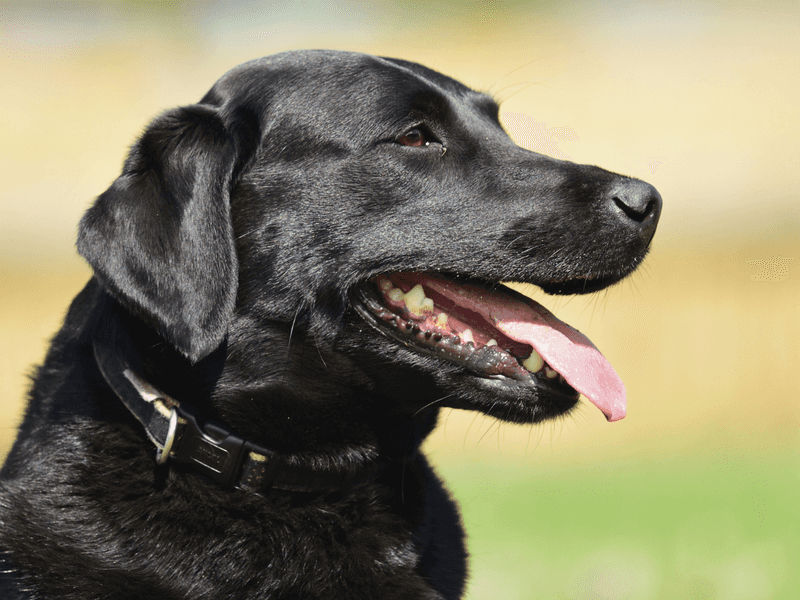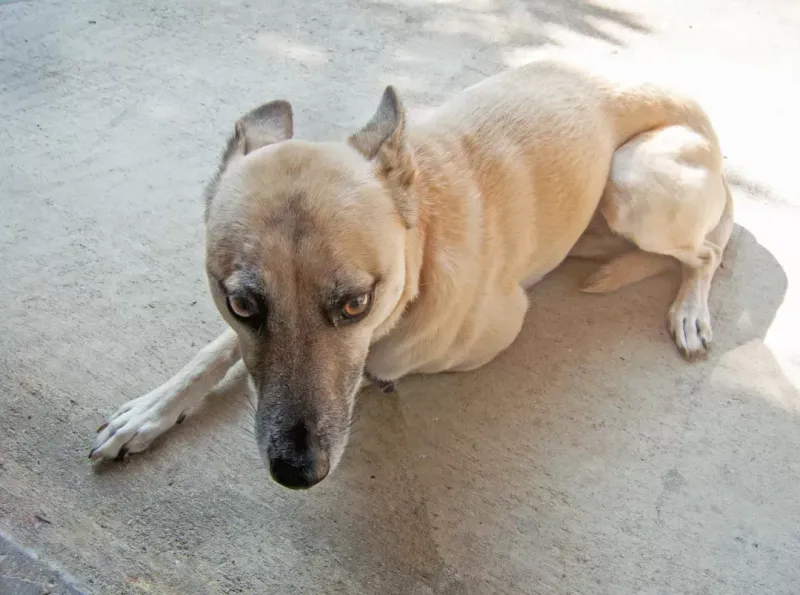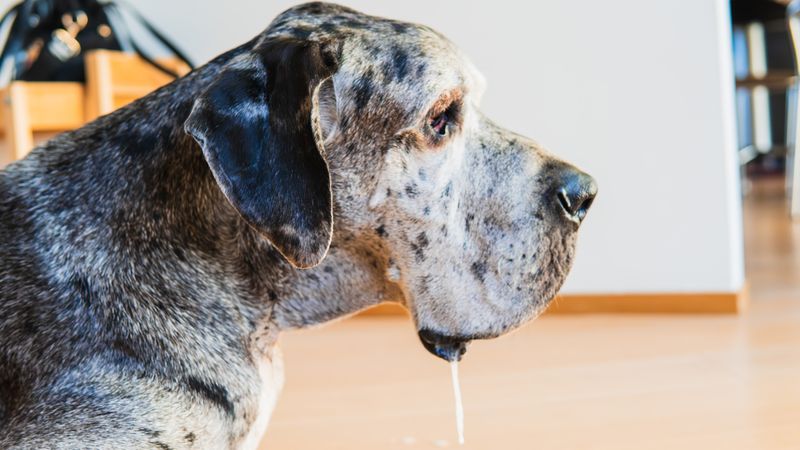Dogs often communicate their feelings in subtle ways. Understanding these quiet signals of stress can help you support and comfort your furry friend. Here are 14 signs that your dog might be experiencing stress and how you can help them feel at ease.
Yawning Excessively
When your dog yawns frequently, it may not be due to tiredness. Yawning can be a canine expression of anxiety or stress. Picture this: your usually energetic pup suddenly starts yawning multiple times in a row. This could be a sign they’re feeling uneasy.
Dogs use yawning to calm themselves in stressful situations. It’s their way of taking a deep breath and trying to relax. Next time you notice this behavior, consider the environment. Is there something new or unsettling? Offering comfort or a familiar toy can help ease their mind.
Pacing Restlessly
Imagine a dog that just can’t seem to sit still. Pacing is a common indicator of stress in dogs. They may walk back and forth continuously, almost like they’re trying to work through their worries.
This behavior often occurs in unfamiliar or tense environments. If your furry friend is pacing, try to assess the situation. Are there loud noises or strangers around that might be causing anxiety? Providing a safe, quiet space can often help your dog feel more secure and calm down.
Licking Lips Frequently
Lip licking is more than just a sign of hunger for dogs. It can also indicate stress or discomfort. Have you noticed your dog licking their lips when there’s no food around? This behavior might mean they’re feeling uneasy.
Dogs often lick their lips in response to stress as a self-soothing action. In such cases, it’s essential to observe their surroundings. Identifying and removing stressors can help reduce their anxiety and restore their calm demeanor.
Avoiding Eye Contact
Avoiding eye contact is a dog’s way of telling you they’re uncomfortable. If your usually friendly dog suddenly starts looking away when you approach, they might be stressed or anxious.
Eye contact between dogs and humans is a form of communication. When your dog avoids it, they’re signaling discomfort. Try to calm them by speaking softly and offering gentle pats. This can reassure them that everything is okay and they’re in a safe space.
Shedding More Than Usual
Increased shedding can be more than just a seasonal change. Stress can cause dogs to shed more as their body reacts to anxiety.
Imagine brushing your dog and noticing clumps of fur falling out more than usual. This could be a sign of stress. Keeping your dog’s routine consistent and providing regular grooming can help manage this symptom and reduce their stress levels.
Panting Without Physical Exertion
Panting is normal after exercise, but if your dog starts panting heavily without physical activity, stress might be the culprit. Picture your dog sitting quietly but breathing rapidly. This is a common stress indicator.
Observe their environment for potential stressors, like loud noises or unfamiliar visitors. Ensuring your dog has a quiet, comfortable space to retreat to can help alleviate their anxiety and return their breathing to normal.
Hiding or Seeking Isolation
When dogs feel stressed, they may hide or seek isolation to cope. Imagine your dog suddenly disappearing and finding them tucked away in a quiet corner. This behavior signifies their need for a safe space.
Respect their wish for solitude and provide a comforting environment. Gradually, they may feel secure enough to rejoin family activities. Offering a cozy bed or favorite blanket can help them relax and reduce stress.
Changes in Appetite
A stressed dog might eat less than usual or even refuse food altogether. Picture your dog sniffing their bowl and walking away without taking a bite. This sudden change in appetite is often linked to anxiety.
Monitor their eating habits closely. If stress is affecting their appetite, try offering smaller, more frequent meals in a quiet area. This can help them feel more comfortable and encourage them to eat.
Excessive Barking or Whining
Excessive barking or whining can be your dog’s way of expressing stress. Imagine your dog suddenly barking at every little noise or whining incessantly. Such vocalizations are often cries for help.
Identify the triggers causing this behavior. It could be a new pet, visitor, or environmental change. Addressing the underlying cause can help calm your dog and reduce their stress levels.
Ears Pinned Back
Pinned back ears are a subtle but clear sign of stress in dogs. Picture your dog sitting with ears flat against their head, looking uncomfortable.
This body language indicates they’re feeling anxious or threatened. Observe their surroundings for potential stressors and offer comfort through gentle touch or reassuring words. This can help them feel more secure and less stressed.
Destructive Behavior
Destructive behavior is often a sign that your dog is overwhelmed by stress. Imagine coming home to find your favorite pillow torn apart. This could be your dog’s way of coping with anxiety.
Provide them with plenty of physical and mental stimulation to channel their energy positively. Interactive toys and regular playtime can help reduce stress and prevent destructive habits.
Excessive Drooling
Drooling can be more than just a sign of hunger or excitement. When a dog drools excessively without obvious reason, stress might be the cause. Picture your dog leaving puddles of drool on the floor, looking uneasy.
Monitor their environment for stressors and reassure them with calm interactions. Reducing their stress levels can help decrease drooling and improve their overall comfort.
Trembling or Shaking
Trembling or shaking isn’t always due to cold. Stress can cause dogs to shiver as a physical response to anxiety. Picture your dog shaking slightly even in a warm, comfortable setting.
Identify potential stress factors, like loud sounds or unfamiliar visitors. Offering comfort and creating a peaceful environment can help alleviate their anxiety and reduce trembling.
Unusual Vocalizations
Dogs might make strange vocalizations when stressed. Imagine your dog emitting unfamiliar sounds, like a mix of growls and whines. This vocal behavior can be their way of expressing unease.
Pay attention to these sounds and the context in which they occur. By understanding your dog’s stress triggers, you can take steps to minimize them, helping your pet feel more at ease.














